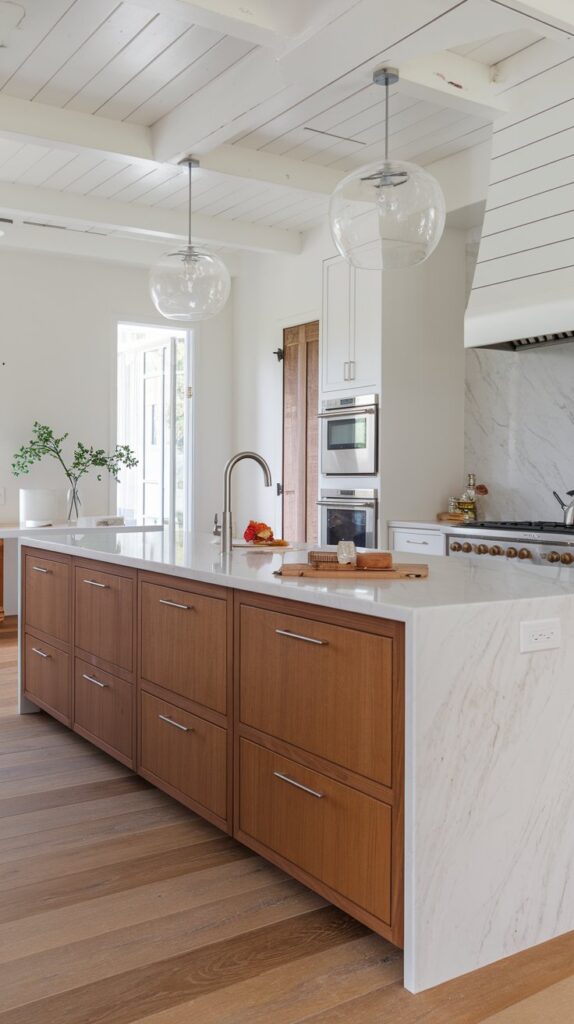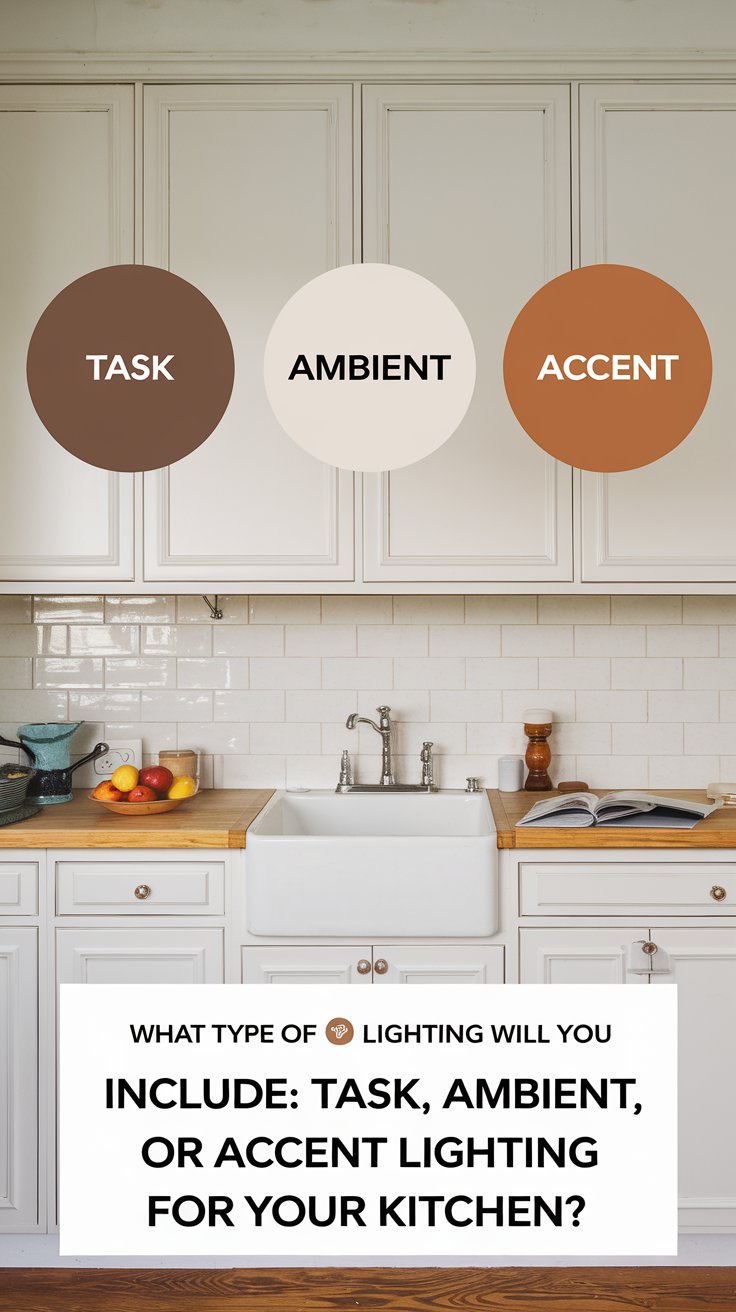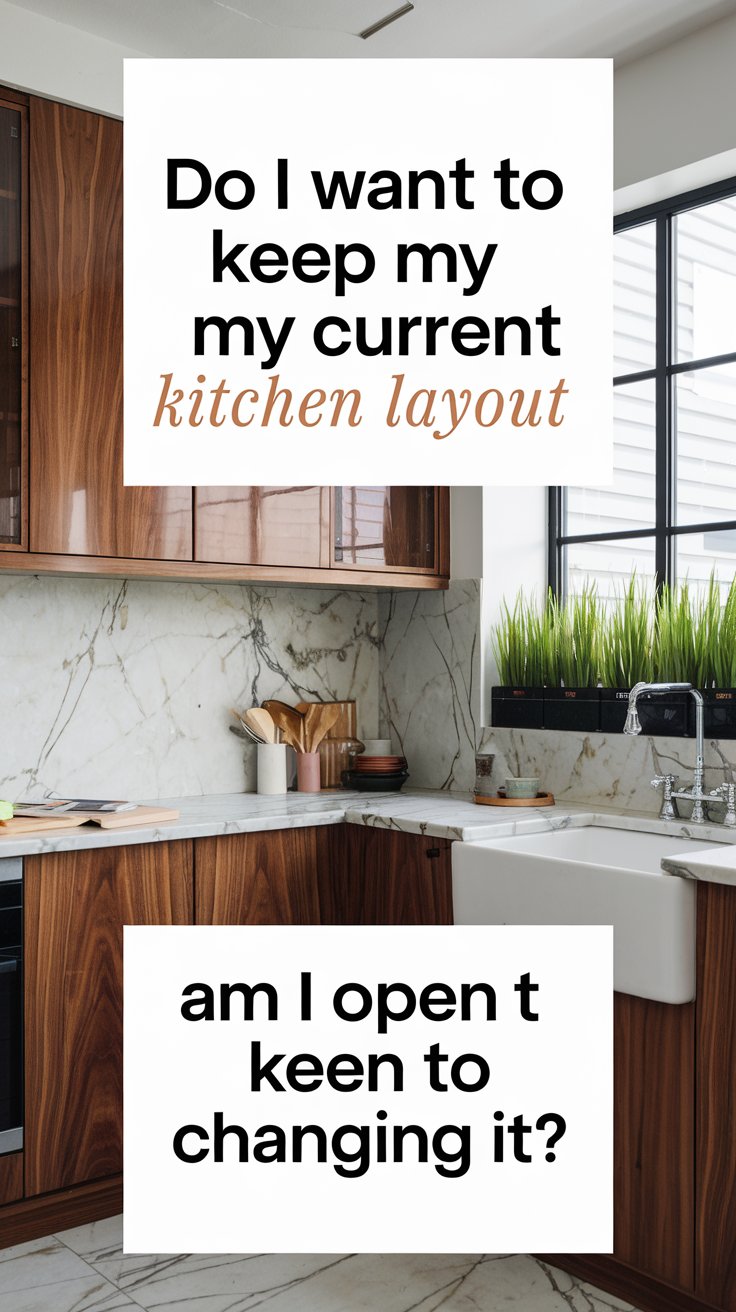When designing or renovating a space, selecting the right materials for countertops, cabinets, and flooring is essential to achieve both functionality and aesthetics. With a wide variety of options available, understanding their properties, benefits, and suitability can help you make informed decisions that align with your style, needs, and budget.

1. Countertops: Combining Durability and Style
Countertops are a crucial element in kitchens and bathrooms, serving as both a functional work surface and a design statement. Here are the most popular countertop materials:
a. Granite
- Characteristics: A natural stone with unique patterns and colors.
- Pros:
- Extremely durable and heat-resistant.
- Adds a luxurious appeal to spaces.
- Scratch-resistant when sealed properly.
- Cons:
- Requires regular sealing to maintain resistance to stains.
- Expensive compared to other materials.
b. Quartz
- Characteristics: Engineered stone made from crushed quartz and resin.
- Pros:
- Non-porous, making it resistant to stains and bacteria.
- Wide range of colors and patterns.
- Low maintenance.
- Cons:
- Less heat-resistant than granite.
- Can be pricey.
c. Marble
- Characteristics: A timeless natural stone with veining patterns.
- Pros:
- Elegant and luxurious appearance.
- Heat-resistant and perfect for baking surfaces.
- Cons:
- Prone to scratching and staining.
- Requires high maintenance, including frequent sealing.

d. Laminate
- Characteristics: Made of particleboard covered with a decorative plastic layer.
- Pros:
- Budget-friendly and easy to install.
- Available in a variety of colors and patterns, including stone and wood look-alikes.
- Low maintenance.
- Cons:
- Less durable; susceptible to chipping and scratching.
- Not heat-resistant.
e. Butcher Block
- Characteristics: Made from hardwoods like maple, walnut, or oak.
- Pros:
- Warm, natural appearance.
- Can be sanded and refinished to remove scratches.
- Affordable compared to stone materials.
- Cons:
- Requires regular sealing and oiling.
- Vulnerable to water damage and stains.
f. Concrete
- Characteristics: Poured and customized for a seamless, modern look.
- Pros:
- Highly customizable in color and texture.
- Extremely durable and heat-resistant.
- Cons:
- Can crack over time.
- Requires sealing to prevent stains.
g. Solid Surface
- Characteristics: Non-porous material made from acrylic or polyester.
- Pros:
- Seamless appearance.
- Repairable surface that can be sanded if scratched.
- Available in a wide range of designs.
- Cons:
- Less heat-resistant.
- Can be scratched more easily than stone.

2. Cabinets: The Backbone of Storage
Cabinets define the character of kitchens and bathrooms while offering essential storage. The material choice impacts durability, maintenance, and appearance.
a. Solid Wood
- Characteristics: Made from natural hardwoods like oak, cherry, maple, or birch.
- Pros:
- Timeless and versatile appearance.
- Highly durable and long-lasting.
- Can be refinished or painted for a new look.
- Cons:
- Expensive compared to engineered materials.
- Can warp or expand in high humidity.
b. Plywood
- Characteristics: Made by layering thin sheets of wood veneer.
- Pros:
- Stronger and more stable than solid wood in certain applications.
- Affordable and lightweight.
- Resists warping and cracking.
- Cons:
- Less luxurious than solid wood.
- Requires quality veneers for an upscale appearance.
c. Medium-Density Fiberboard (MDF)
- Characteristics: Engineered wood made from compressed wood fibers.
- Pros:
- Smooth surface ideal for painting.
- Budget-friendly.
- Resists warping and cracking.
- Cons:
- Less durable than solid wood or plywood.
- Vulnerable to water damage.
d. Particleboard
- Characteristics: Compressed wood particles bonded with resin.
- Pros:
- Most affordable cabinet material.
- Lightweight and easy to install.
- Cons:
- Low durability; prone to sagging and water damage.
- Limited lifespan.
e. Thermofoil
- Characteristics: MDF or particleboard coated with a plastic film.
- Pros:
- Inexpensive and low-maintenance.
- Available in various finishes, including glossy or wood-look.
- Cons:
- Prone to peeling and discoloration over time.
- Not heat-resistant.
f. Stainless Steel
- Characteristics: Metal cabinets often used in professional kitchens.
- Pros:
- Durable and hygienic.
- Resistant to heat and moisture.
- Industrial, modern aesthetic.
- Cons:
- Expensive and prone to showing fingerprints and scratches.

3. Flooring: Functionality and Visual Impact
Flooring is a foundational element that must balance durability, comfort, and style. The choice depends on the room’s purpose, foot traffic, and maintenance requirements.
a. Hardwood
- Characteristics: Solid wood flooring made from species like oak, maple, or hickory.
- Pros:
- Timeless, warm, and elegant appearance.
- Can be sanded and refinished multiple times.
- Adds value to the home.
- Cons:
- Prone to scratches and dents.
- Susceptible to moisture damage.
b. Engineered Wood
- Characteristics: Layers of real wood veneer over plywood.
- Pros:
- More stable than solid hardwood.
- Compatible with underfloor heating.
- Available in a wide range of finishes.
- Cons:
- Limited refinishing potential.
- Sensitive to excessive moisture.
c. Laminate
- Characteristics: Compressed fiberboard topped with a photographic layer and clear coating.
- Pros:
- Budget-friendly alternative to hardwood.
- Scratch-resistant and easy to clean.
- Quick installation process.
- Cons:
- Not water-resistant.
- Cannot be refinished.
d. Vinyl
- Characteristics: Synthetic flooring available in sheets, tiles, or planks.
- Pros:
- Water-resistant and ideal for kitchens and bathrooms.
- Soft underfoot and quiet.
- Affordable and low-maintenance.
- Cons:
- Limited lifespan compared to hardwood or tile.
- Can look artificial.

e. Tile
- Characteristics: Made from ceramic, porcelain, or natural stone.
- Pros:
- Durable and water-resistant.
- Wide range of styles, colors, and textures.
- Suitable for high-moisture areas.
- Cons:
- Hard underfoot and cold to the touch.
- Installation is labor-intensive.
f. Natural Stone
- Characteristics: Includes marble, granite, slate, and limestone.
- Pros:
- Luxurious and long-lasting.
- Unique patterns and textures.
- Heat and moisture-resistant.
- Cons:
- Expensive and requires regular maintenance.
- Prone to scratches and stains.
g. Bamboo
- Characteristics: Eco-friendly flooring made from natural bamboo.
- Pros:
- Sustainable and renewable material.
- Durable and resistant to moisture.
- Modern, minimalist appeal.
- Cons:
- Can be prone to scratches.
- Limited water resistance.
h. Cork
- Characteristics: Made from bark of cork trees.
- Pros:
- Soft, warm, and comfortable underfoot.
- Eco-friendly and renewable.
- Naturally resistant to mold and mildew.
- Cons:
- Requires sealing for water resistance.
- Can fade in direct sunlight.

Factors to Consider When Choosing Materials
- Budget: Establish a realistic budget to prioritize investments in key areas.
- Durability: Consider how much wear and tear the material will endure.
- Maintenance: Opt for materials that align with your cleaning and upkeep preferences.
- Aesthetic: Ensure the materials complement your design style and color scheme.
- Lifestyle: Choose materials that suit your household, including kids, pets, or frequent entertaining.
Conclusion
Selecting the right materials for countertops, cabinets, and flooring is vital for creating functional, beautiful, and long-lasting spaces. Granite, solid wood, and hardwood offer timeless elegance, while quartz, engineered wood, and vinyl provide modern, budget-friendly alternatives. By balancing style, durability, and maintenance needs, you can design spaces that reflect your personality and stand the test of time.







